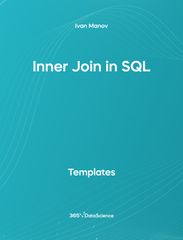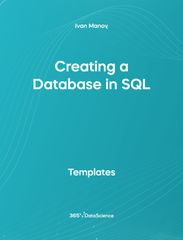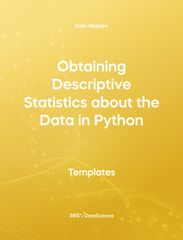Data Science Templates
Boost your programming skills with free SQL, R, Excel, and Python templates and create top-notch projects for your portfolio.Accelerate your workflow with code-ready data science templates from 365 Data Science instructors—designed to enhance efficiency in your programming projects.
Discover a myriad of valuable resources—from a time-saving data science cheat sheet to data analysis and visualization templates in Excel and ready-to-use SQL, R, and Python coding shortcuts.
Whether you’re unsure how to approach a task or work on a time-sensitive project, these templates are designed to streamline your work and enhance productivity.

Inner Join in SQL Template
Joins are the SQL tools that allow us to work with data from multiple tables simultaneously relying on the logical relationship between their objects. The INNER JOIN clause, in particular, creates a new instance of a table that combines rows with matching values from two tables. Thus, null values, or values appearing only in one of the tables, will not be extracted. In this free sql template you will be applying the SQL Inner Join clause on a set of business department tables.
Learn More
Creating a database in SQL Template
Developed in the 1970s by a group of IBM researchers, SQL continues to be the most popular programming language for relational database management and is used by companies like Facebook to store mounts of user data. None of this would be possible without the foundation of the SQL language- the database. That is the place where information is organized into tables and can be accessed, manipulated, and retrieved in any desired way. Consider this as the very first step in your SQL journey as this free sql template will show you how to make a SQL database in MYSQL.
Learn More
Having Clause in SQL Template
SQL is specifically designed to help you navigate through large amounts of structured data, modifying, retrieving, and creating new tables out of it. The having clause works in conjunction with common aggregate functions like min, max, ave, count and sum, and allows you to filter and return group results that meet the specified conditions. In this free sql template, you will apply the having clause to display salaries that are higher than a certain value in ascending order.
Learn More


